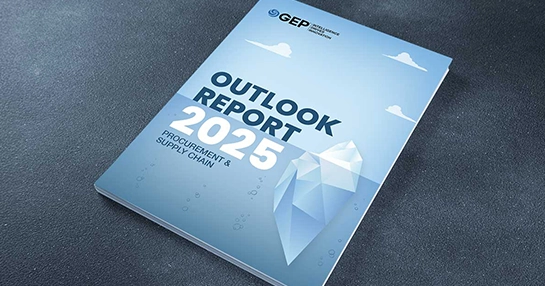
5 Ways You Can Benefit by Involving Procurement Early
- Businesses can benefit by involving procurement and suppliers right from the early stages of a project.
- Close collaboration between procurement and suppliers can help reduce costs, mitigate risks and accelerate time-to-market.
- It also helps procurement build long-term relationships with suppliers.
April 11, 2025 | Procurement Strategy
As a procurement professional, you may be fully engaged in managing supplier relationships, contracts and expenditures. But do you often get involved in the process at a much later stage, perhaps for negotiations and contract management ?
This isn’t surprising, as many businesses consider procurement a tactical function that focuses mainly on cost savings. They do not think of involving procurement earlier during the project planning phase. The result?
Procurement is left out of critical decisions, which impacts its ability to effectively manage suppliers and monitor their performance. There is too much of back and forth between internal teams and suppliers. And internal teams often make purchases outside contracts, increasing maverick spending.
So how can businesses ensure that procurement can work to its full potential and achieve its deliverables? And perhaps even go beyond and contribute to strategic goals.
The key to succeeding here is to involve procurement early. But when exactly? Let’s find out.
What Does Early Procurement Involvement Mean?
Early procurement involvement means engaging the procurement function at an early stage of a project. This allows procurement to identify opportunities for cost avoidance and savings.
Also known as early supplier involvement, this is a proactive approach in which procurement engages suppliers early and works with them closely to develop or review product specifications.
With a deep understanding of components, raw materials and production processes, suppliers are well-placed to identify potential savings opportunities. Early engagement with suppliers helps procurement better understand sourcing strategies and production timelines.
Along with supplier insights, early engagement also means that both parties can share best practices from a procurement perspective. A sneak peek into supplier operations can help procurement streamline supply chain operations. It can also provide procurement with strategic insights into suppliers’ ESG practices.
Advantages of Early Procurement Involvement
Involving procurement and suppliers early on in a project offers significant benefits for the business. You can:
● Explore cost-saving opportunities:
This approach helps procurement leverage suppliers’ capabilities and expertise in production. Both parties can explore cost-saving opportunities while maintaining product quality standards.
● Identify risks early:
Engaging suppliers early helps reduce risks associated with developing new products. This helps identify risks at an early stage of the product life cycle. If the risk relates to material availability, suppliers can suggest alternate materials or changes in product design.
● Accelerate time-to-market:
Procurement works closely with suppliers early on during the product development phase and leverages its skills to identify risks and costs. Suppliers offer their expertise to develop innovative solutions and market-ready concepts. Close collaboration accelerates the time-to-market and provides a competitive advantage.
● Strengthen supplier relationships:
By engaging suppliers early, procurement gets an opportunity to build long-term relationships with vendors. It can identify supplier capabilities, strengths as well as areas of improvement. Strong relationships with suppliers can be a huge advantage for the business in the long run.
● Foster a culture of innovation:
By involving procurement early, you can also spark innovation. When procurement works closely with suppliers from the start, it creates a feedback loop that drives innovation. Suppliers can offer new materials, technologies or processes that can impact project outcomes.
How to Involve Procurement Early
So, you are convinced about involving procurement right at the beginning of the project. But how do you go about it? Here are a few steps you should take:
1. Involve different teams
During early project planning, set up cross-functional teams that include procurement professionals and other teams. Such a team setup allows procurement to share insights that can directly impact project scope, design, and deliverables.
2. Train and educate
Bring everyone on board to the idea of procurement’s early involvement. Discuss the benefits of collaborative teams to overcome any initial reluctance.
3. Adjust the current process
Integrate procurement strategies into project lifecycles. Adjust project management frameworks to incorporate procurement milestones and checkpoints. Define workflows clarifying when and how to involve procurement.
Start Involving Procurement Now
Procurement has evolved from a back-office function to a strategic business unit that can go beyond cost savings and add more value to the business. So, the next time you begin a project, make sure to bring a procurement team member into the conversation from the start. Involve all stakeholders to have a consensus on project execution and timelines.



